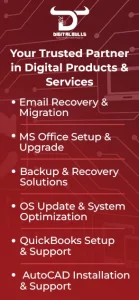7 Method for How to Factory Reset Windows 10- Complete Guide
Posted by:
A factory reset restores your Windows 10 computer to its original state by removing all personal files, apps, and settings. This process helps fix system errors, remove viruses, speed up a slow PC, and resolve software conflicts. It is also useful for clearing out unwanted programs and preparing your device for sale or donation. Before resetting, it is important to back up your data and prepare necessary software information. Overall, a factory reset offers a fresh start to improve system performance and security.
Preparing for Factory Reset
Before performing a factory reset on Windows 10, it is important to prepare properly to avoid losing important data or encountering issues during the process. Start by backing up all your personal files, such as documents, photos, videos, and any work-related data, to an external drive or cloud storage. Make a list of any essential software you will need to reinstall afterward, along with their product keys or login information. If possible, ensure your device is fully charged or plugged in during the reset to prevent interruptions. Also, sign out of your Microsoft account if you plan to give away or sell the device. Taking these steps ensures a smooth reset and makes it easier to get your system up and running again afterward.
7 Methods to Factory Reset Windows 10 – Complete Guide
Factory resetting a Windows 10 computer is a powerful way to resolve major system problems, clear out clutter, remove viruses, or prepare a device for resale. Whether you’re dealing with stubborn software glitches, planning to sell your PC, or simply want a fresh start, there are several ways to reset Windows 10 to its original state. Below are seven effective methods to factory reset your system.
1. Reset from Windows Settings
This is the most user-friendly method. Follow these steps:
-
Click Start > Settings > Update & Security > Recovery
-
Under Reset this PC, click Get started
-
Choose Keep my files or Remove everything
-
Follow on-screen instructions
This option is best for those who can still log in to their computer and want a clean refresh with minimal hassle. It reinstalls Windows while giving you the option to keep personal files.
2. Reset via Advanced Startup (Shift + Restart)
If your system is not functioning properly but still boots, try this:
-
Hold the Shift key and click Restart from the Start menu
-
In the blue Choose an option screen, select Troubleshoot
-
Click Reset this PC and follow the prompts
This method is especially useful if you’re unable to access the Settings app due to glitches or errors.
3. Factory Reset using Bootable USB (Clean Install with Media Creation Tool)
This is the most thorough option for a full system wipe and clean install.
Steps:
-
Download the Media Creation Tool from Microsoft on another working PC
-
Create a bootable USB drive
-
Insert the USB into the problem PC and boot from it (you may need to enter BIOS to change boot order)
-
Choose Install Windows
-
When prompted, choose Custom Install to wipe everything
This method is ideal if your PC won’t boot, is severely infected with malware, or you want a completely clean slate.
4. Use System Image Recovery
If you previously created a system image, you can restore your PC to that exact state.
Steps:
-
Boot into Advanced Startup (Shift + Restart or from USB)
-
Choose Troubleshoot > Advanced Options
-
Select System Image Recovery
-
Choose the image file and follow the steps
This is excellent for users who want to restore all settings, files, and programs to a previous stable point.
5. Factory Reset from Recovery Partition (OEM Reset Option)
Most PCs from brands like HP, Dell, or Lenovo come with a built-in recovery partition.
How to Access:
-
Restart your computer and press the designated key (commonly F11, F9, or F8) during boot
-
Follow the on-screen instructions for System Recovery
This option resets the system back to its factory state as it was when you first bought it, including OEM software and drivers.
6. Factory Reset via Command Prompt (systemreset Command)
This is useful when Settings doesn’t open or Windows is partially functional.
Steps:
-
Press Windows + R, type cmd, and press Enter
-
In the Command Prompt, type:
systemreset
Press Enter
-
Choose to either keep files or remove everything
For systems where the GUI is broken or unresponsive, this command can trigger the reset process from a command-line environment.
7. Use Fresh Start from Windows Security
Note: In newer Windows 10 versions, Fresh Start has been merged into the Reset options, but older builds still offer this separately.
Steps:
-
Open Windows Security
-
Go to Device performance & health
-
Click Additional info under “Fresh Start”
-
Follow the prompts to reinstall Windows without bloatware
This option reinstalls Windows while removing most third-party apps, giving you a clean experience without affecting your files.
Why You Might Need to Factory Reset Windows 10
1. To Fix System Errors or Crashes
Sometimes your computer might randomly crash, freeze, or show a blue screen. These problems can be caused by corrupted system files, bad updates, or buggy software. When nothing else works, a factory reset brings your system back to its original, stable state—just like when it was brand new.
2. To Speed Up a Slow PC
Over time, Windows can get cluttered with too many files, startup programs, background apps, and registry issues. This makes your computer feel slow or unresponsive. A factory reset clears all the junk and helps the system run faster and smoother—like a fresh start.
3. To Remove Viruses or Malware
If your computer has a virus or malware that won’t go away, even after scanning with antivirus software, a factory reset is one of the most effective solutions. It deletes everything on the system—including harmful programs—so the infection is completely wiped out.
4. To Erase Personal Data Before Selling
If you’re planning to sell, donate, or recycle your computer, it’s important to protect your personal data. A factory reset erases all your files, saved passwords, accounts, and installed apps, making sure no one else can access your private information.
5. To Start Fresh with a Clean Installation
Sometimes you just want a clean, uncluttered version of Windows without extra apps, toolbars, or leftover settings. A factory reset gives you a fresh installation, free of junk software, making it easier to personalize the system the way you want.
6. To Resolve Software Conflicts
Some programs, drivers, or updates don’t work well together and can cause system problems. These conflicts are sometimes hard to track down. Resetting Windows removes all installed software and resets system files, which often solves the issue.
7. To Free Up Storage and Clear Bloatware
Many new PCs come loaded with pre-installed apps and trial programs (called “bloatware”) that take up space and slow things down. A factory reset removes all of that and frees up storage space, letting your PC use its full potential for the things you actually need.
Why You Might Need to Factory Reset Windows 10
1. To Fix System Errors or Crashes: If your computer often freezes, crashes, or shows blue screen errors, it could be due to corrupted files or faulty updates. A factory reset restores Windows to its original state, helping fix these problems by removing anything that is causing instability.
2. To Speed Up a Slow PC: Over time, your computer can slow down because of unnecessary files, too many background programs, or cluttered system settings. A factory reset removes all of that, helping the system run faster and more efficiently.
3. To Remove Viruses or Malware: Sometimes viruses or malware are so deeply hidden in the system that antivirus tools cannot fully remove them. A factory reset completely wipes the hard drive, eliminating any hidden threats and giving you a clean system.
4. To Erase Personal Data Before Selling: Before giving away or selling your computer, it is important to remove all personal information like files, accounts, and passwords. A factory reset ensures that everything is deleted and your data stays private.
5. To Start Fresh with a Clean Installation: Some users prefer a simple and clean version of Windows without any extra apps or settings. A factory reset installs a fresh version of Windows, allowing you to set up the computer your own way from the beginning.
6. To Resolve Software Conflicts: Incompatible software, broken drivers, or failed updates can cause system issues. If these problems are hard to fix, a factory reset can help by clearing all third-party software and restoring default settings.
7. To Free Up Storage and Clear Bloatware: New computers often come with pre-installed programs that you might not use. These take up space and can slow down the system. A factory reset removes this unwanted software, freeing up space and resources.
Benefits of Factory Resetting Windows 10
Improves System Performance: A factory reset clears junk files, resets system settings, and removes background processes that slow down your computer. This helps Windows run more smoothly and efficiently.
Removes Viruses and Malware: If your system has been infected and antivirus programs cannot fully clean it, a reset removes all software on the device, including hidden threats, giving you a safe and secure system.
Fixes Software and Operating System Issues: From corrupted files to faulty updates and driver problems, a factory reset can fix many common issues by restoring Windows to its original state.
Frees Up Storage Space: A reset deletes unnecessary files, apps, and cached data that build up over time. This can free up a significant amount of storage and make your device feel like new.
Provides a Clean Fresh Start: Ideal for users who want to reorganize their computer, start new projects, or simply remove digital clutter. A reset gives you a fresh version of Windows to work with.
Conclusion
In conclusion, performing a factory reset on Windows 10 can be a powerful solution to fix system errors, improve performance, remove malware, and start fresh with a clean installation. While it may seem like a big step, careful preparation and understanding the benefits can make the process smooth and worthwhile. If you need detailed guides, troubleshooting help, or support with QuickBooks and other software issues, DigitalBulls offers a wide range of resources to assist you every step of the way. Visit their website to find helpful articles and expert advice to keep your systems running at their best.



